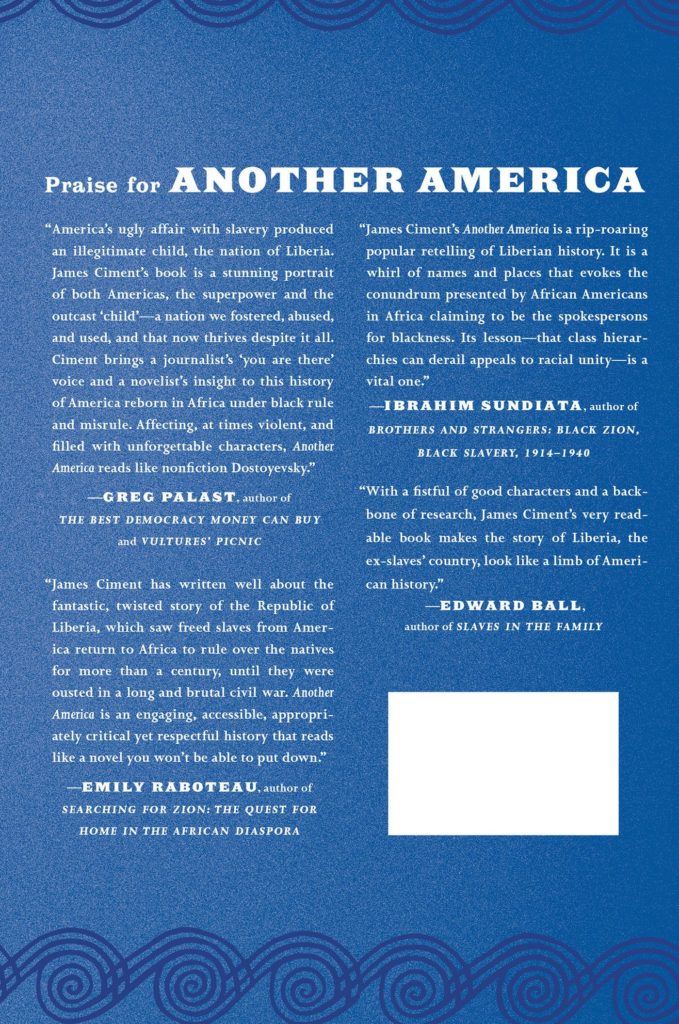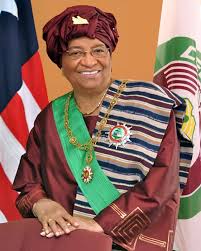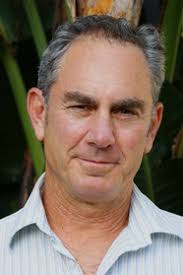Another America: The Story of Libera and the Former Slaves Who Ruled It (2013) by James Climent
Genre: History
GoodReads meta-data is pages 336, rated 3.60 by 163 litizens.
Verdict: Quite a story well told.

Settling freed slaves in Africa started when the British Royal Navy began breaking up human trafficking. When the RN found a contraband cargo of slaves — termed recaptives — they were put ashore; the easiest place to land them was in what became Freetown of Sierra Leone. It was near the sea lanes the RN patrolled to interdict the traffic, it had a natural harbour with plenty of fresh water nearby, and the prevailing winds made it was easy to navigate there. It was easy for the Brits, but of course the enslaved individuals might be from anywhere. Certainly few originated from that area.
When the American Colonial Society (ACS) hatched the idea of exporting blacks to Africa, this British example offered a model of sorts, well the only available example. The ACS was a committee which included some heavy hitters like Henry Clay and James Monroe though they gave it only a little of their time. Its purpose was mixed. Some like Clay wanted to rid the South of free blacks, whose presence might inspire black slaves to seek freedom themselves. There were a surprising number of such freedmen for a time as the generation inspired by the rhetoric of the American Revolution, among them Monroe himself, manumitted slaves in their wills. As members of that generation died, black southern freedman (and women) increased.
Thus one area of Liberia is called Ashlands after Clay’s Kentucky estate, while the capital is called Monrovia after the President Monroe.
Yet Southerners did not want a mass exodus of slaves for two reasons, one political and one economic. The latter is the cotton business which rested to a lot of cheap labour. The political reason was the Three-Fifths clause of the U.S. Constitution. That is 3/5s to the illiterate. (Look it up and be informed.) Every few years some semi-literate journalist stumbles over the Three-fifths Clause and it appears in the media as a by-lined discovery of investigative journalism. I do not kid for I have seen same. Me, I learned about it in Civics in High School.
Likewise there were northerners who wanted to sweep freedman away from the streets of Philadelphia, Boston, and New York to protect their wives, daughters, and maiden aunts.
Then there were the abolitionists who supposed a black would never have a good life in the United States because of white animosity, regrettably concluding that they would be better off in their own society. There were other abolitionists who thought that was an immoral cop-out and opposed transportation.
Then there were evangelicals, then as now, never constrained by fact, logic, or sense, who urged transporting savage American blacks who can never be civilised to Africa where they will take Christianity to civilise the heathens. Tune in to so-called Christian TV for more the same twisted reasoning everyday.
In short, there were many interests who saw in the prospect what they wanted to see, including shipping companies in Boston who saw lucrative contracts for transportation.
The response of blacks was also varied. Their only social organisations were churches, and in the north church leaders liked the idea and set about cooperating with the nascent schema. When, however, their congregations learned of the prospect, they were far less enthusiastic about leaving behind the advances and achievements they had made in their own lives for an unknown new world.
In the south freed blacks were more enthusiastic than their ilk in the north for the scheme, perhaps because their lives were more precarious.
While the ACS initially relied on Federal fundings secured in a slow process by President Monroe, at least three states started their own schemes, Maryland, Mississippi, and Virginia. Each recruited by means fair or foul a shipload of blacks and sent them to Africa, accompanied by white overseers. Often a number of slaves would be freed on the docks so as to transport them.
No effort was made to recruit blacks with the experience or skills needed to start from scratch in the new environment. Nor was there any assessment of the likely new environment. Instead the ships began to sail toward Freetown and then tack south a bit to an area not claimed by any European power, because there was no harbour, and nothing to motivate a claim. This is the coast of what became Liberia.
A ship might have between fifty and eighty blacks, men, women, and children, and two or three white overseers who would land. Initial efforts to colonise islands rather than risk the rocks, sandbars, or shoals off the beaches were disastrous. There were few natives on the islands because there was little water, game, or land for agriculture and the islands were lashed by wind and rain.
Equally, the overseers were unprepared for what lay ahead.
When shore landings were made, the natives were not friendly. European traders had long been welcome for a week at a time, but not colonists who came to stay and who would compete with the natives for game, land, water, and trade with visiting Europeans. The natives referred to the incomers as ‘black white men’ because though their skin was dark, their ways — clothing, manners, attitudes, weapons, food — were white.
Even worse was the insects and the disease they bore: malaria. Between a third and half of all transported blacks died within twelve months, mainly due to this malady.
The differences among the transported: north and south, free and slave would be cemented into the gestating social structure. Equally the hostility between the natives and transported would also endure and be solidified over the years in the population. Of course there were divisions among the natives in the area but these recede in importance against the black white men. In short, the black white men reproduced the very society they had left. Skin colour was of paramount importance. The light-skinned dominated the dark settlers, and both enslaved the natives. Yes, in the 1920s there was slave labour in Liberia to make rubber for Firestone Tires.
A ruling caste and class emerged which carefully guarded its dominance in much the same way as occurred in the ante-bellum South. At the top were the descendants of the First Fleet, free emigrants (rather than an emancipated slaves), mulattos (only part Negro and part white), light-skinned, these people put the wagons in a circle that lasted well into the 1960s. Oh yes, elections occurred. In one instance an electorate of 5,000 cast 25,000 votes for the incumbent! Get the idea? Sounds like Mayor Richard Daley’s Chicago, where miracles of miracles, the dead voted for years.

The ruling caste was finally deposed in the latter Twentieth Century in a series of bloody civil and tribal wars. It makes gruelling reading. More than ten percent of the population died. A sitting head of state was found guilty of crimes against humanity during the course of these events, as one crazed tyrant replaced another. Exhaustion set in, leaving the country a wreck which has struggled to recover since then, and has had free elections and at least one peaceful transfer of power. These are hopeful signs, but the background of deep animosity among Liberians remains, I suppose, rather as it did in Tito’s Yugoslavia for forty years only to re-emerge whole when the amber melted.


